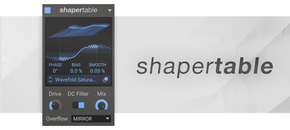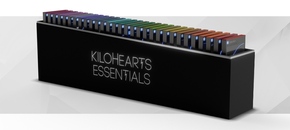Not Just Another Boring Synth VST
Verdict - The versatility in Phase Plant’s generator approach really is a fresh take on developing initial tones and textures to craft. The filters are dynamic and easily adjustable, and modulation is quick, easy, and practically limitless.
Pros
- Amazing sound design potential
- Refreshing modular approach
- Flexible FX routing
Cons
- CPU hungry
- Intimidating for beginners
- Full effects range must be purchased separately
Ratings
- Ease Of Use - 8.5
- Sound Quality - 9
- Features - 9.5
- Value For Money - 8.5
Overall Score - 8.9 / 10
A Sound Designer's Dream?
In a world full of wavetable synthesizers like Serum, Massive etc, what can be the next big tool that stands out and offers us, producers and programmers, a world of new possibilities?
Well, Phase Plant by Kilohearts is here to shake up the industry and offer you a fresh option for sound design.
Like many synthesizers, Phase Plant offers wavetable oscillators, much like Massive and Serum.
However, unlike these synths, Phase Plant offers the user full modular functionality – it is essentially a hybrid wavetable/modular synthesizer.
This means that you literally build your patch from the ground up by routing its built-in modules piece by piece in order of the signal flow. Immediately, this opens up a huge world of possibilities.
Understanding signal paths is an imperative factor in using Phase Plant. It’s rare that you have full control over the signal path, unlike Serum where the signal chain is mostly fixed.
Verdict
Phase Plant is an absolute beast. For even the most experienced sound designers, you can unlock new ways of working and really build something outstanding and unique. For beginners, Phase Plant opens up a whole new world of learning and really assists you in developing your understanding of signal flow and sound design as a whole.
Ease of Use
Visually, the GUI is simple but effective. The text is bold and the colours are easy on the eyes, however, there could be more variation in the colour span. The simple arrow system depicts signal flow clearly and encourages understanding of the overall process.
The interface is particularly effective and easy to use, however at first it may seem a bit overwhelming and alien to a beginner, this is because it appears fairly blank initially. Phase Plant forces you to build from the bottom up, so you must become familiar with its different modules and start implementing them in the dedicated sections.
Fortunately, the layout of each section is very tidy.
These sections include ‘generator’ where you build your sound sources, ‘modulator’ where you set up your modulation sources, and finally a dedicated ‘effects’ section with 3 separate lanes. For any beginner, I’d recommend reverse engineering one of Phase Plant’s many presets and it will become surprisingly clear, the GUI encourages this!
Phase Plant keeps its macro knobs right across the top of the UI, so they are quick and easy to access. There is also a very easy-to-navigate browser section with a tidy menu that lets you browse the presets.
Features
Generators
The generator section is a really cool concept within Phase Plant. Instead of having just variable oscillators to craft the initial tone of your sound, the synth encourages you to build an initial signal chain using oscillators, samplers, and filters.
You can then apply a utility generator to finalize or deviate the output of your chain. You are able to utilize 3 distinct oscillators (‘analog’, ‘wavetable’, and ‘noise’). An amazing feature is that you can also input a sampler into the chain, this opens up a world of possibilities and we’re only just at the base of the sound!
The utility generators include, ‘group’, ‘aux’, ‘mix’, and ‘output’, and these essentially act as mixers that you can build to route your patch as desired. This approach makes it very quick and easy to create very thick layered sounds.
Much like Serum, Phase Plant offers the ability to edit the wavetables using its wavetable editor function. Within this menu on the left-hand side, you can find a handful of tools to modify the wavetable. These include a selection tool, a morph tool, and a brush tool. There is also a handy copy and paste function. However, Serum still rules in this area with its incredible array of highly specific features for editing wavetables.
Filters
The filters within Phase Plant may seem basic at first, but there’s more than meets the eye here. You have your typical LP, BP, HP, BR, Shelf, and NP – However, dig a little deeper and you will quickly realize that there are few restrictions when it comes to combining these filters.
For example, you could try stacking up many band-pass filters, with slightly different cutoff frequency settings, and then route them to a single macro knob for control – this sort of approach can yield some really interesting results!
You’ll also find Slice EQ, which is an EQ that you can modulate with LFOs, envelopes, and all the usual modulation sources. This means you can create whatever filter shapes you desire with it! There are also various extra filter options within Phase Plant’s dedicated FX section. These include a comb filter, a formant filter, and a ‘ladder’ filter, each of which can be applied within your FX chain to further colour your sound!
FX
The FX section inside Phase Plant is really intuitive and versatile! Out of the box, it comes with 6 main FX units, 3x EQ, stereo widening, delay, and dynamics. This is the most basic set of tools, however, Phase Plant allows you to import all of Kilohearts’ 28 Snap-in FX plugins right within the synth’s GUI. These can all be used with fully functioning modular capabilities- opening up a world of possibilities.
The FX section on the right of the synth allows you to build up three lanes of effects. You can route any of the generators to any of these lanes. This allows you to create some really cool chains that can be easily modulated between, very handy!
Modulation
Modulation within Phase Plant is some of the easiest and most effective that I’ve used in any synth. Starting with the sources, you have access to an envelope, LFO, and ‘random’. You also have full MIDI modulation capabilities with ‘note’, ‘pressure’, and velocity all available as sources. Finally, we have general utilities which are the Max, Min, and Multiply modulation sources.
Each generator also has capabilities as a modulator, this means you can use the sampler as a source to modulate a wavetable position and so on. The options are quite literally endless and you can quite easily get lost in the infinite modular possibilities that Phase Plant has to offer.
Applying modulation is simple and intuitive. Literally, just click on the plus symbol next to the module and all the available source destinations will light up! For users of Serum and Massive (check out our synth shootout here), this will be clear and easy to pick up.
Phase Plant has 8 macro knobs which are all fully routable.
Sound Quality
Phase Plant’s sound is clean and digital much like Serum’s. But the modular possibilities make it particularly effective at creating moving pads, evolving FX, and leads. However, Phase Plant is an absolute monster when it comes to creating basses– at least this is what I know I will be using it for mostly. The option to apply audio rate frequency modulation means that FM basses, plucks and bells are no problem for this synth.
Value for Money
There are a handful of different options you can choose when you go to buy Phase Plant. There are a few different tiers that determine what comes in the package.
For €169 you get the basic version and this comes with a few snap-in plugins. For €199 you can begin adding extra FX, including saturation and compressors. For €349 you get access to even more of Kilohearts’ snap-in plugins such as the transient shaper and the ladder filter.
Finally, in my opinion, the best option (if you’re after value for money) is the ‘affordable access for all', or rent-to-own option. For €9.99 a month you get access to the full software and all of Kilohearts’ extra snap-in FX modules, you also get the newest plugins as they become available!
(BTW, A Quick Note on CPU Usage)
Phase Plant is a monster and monsters need a lot of feeding. Therefore the CPU usage on Phase Plant can get a bit excessive. However, this is entirely depending on what sort of sound you are engineering.
For example, if you are developing a huge chord stack with tonnes of oscillators and a lot of unison, the CPU can begin to feel the pressure. I believe this mainly comes from the extra oscillators and LFOs that you have available so you have to know when to trade-off.
Phase Plant’s CPU has been cheekily described as ‘five Serums’, but as long as you work to keep your patch tidy and organized you should be able to minimize the CPU weight.
Final Thoughts
With a simple but effective GUI, it shouldn’t take long before you get to grips with it. Once you do I guarantee your workflow speed will increase greatly. The versatility in Phase Plant’s generator approach really is a fresh take on developing initial tones and textures to craft.
The filters are dynamic and easily adjustable. There is nothing stopping you from combining them to create an endless number of filtering possibilities. Additionally, the options for the onboard FX are vast and powerful and can be built upon with Kilohearts’ snap-in FX modules!
Modulation is quick, easy, and practically limitless and with an overall fantastic sound, you should be able to make unique and useable patches in no time. Although CPU can be demanding, it’s totally worth it for such an incredible synthesizer!
Phase Plant gives you more options and flexibility than you can shake a stick at, to make things as big or small as you need without compromising the workflow.
Why We Love It
- Great for workflow
- Flexible
Original Source: Producer Hive.com



